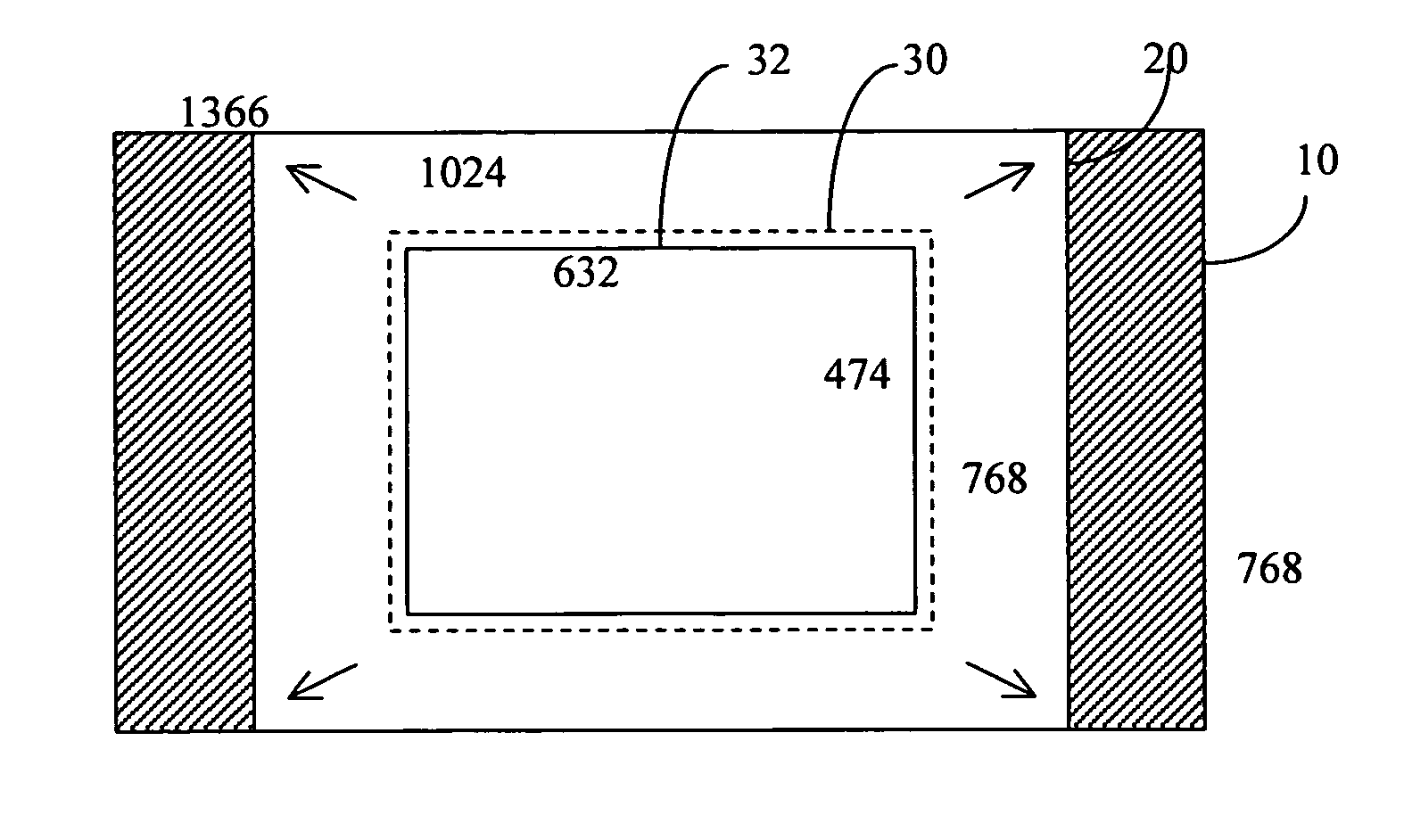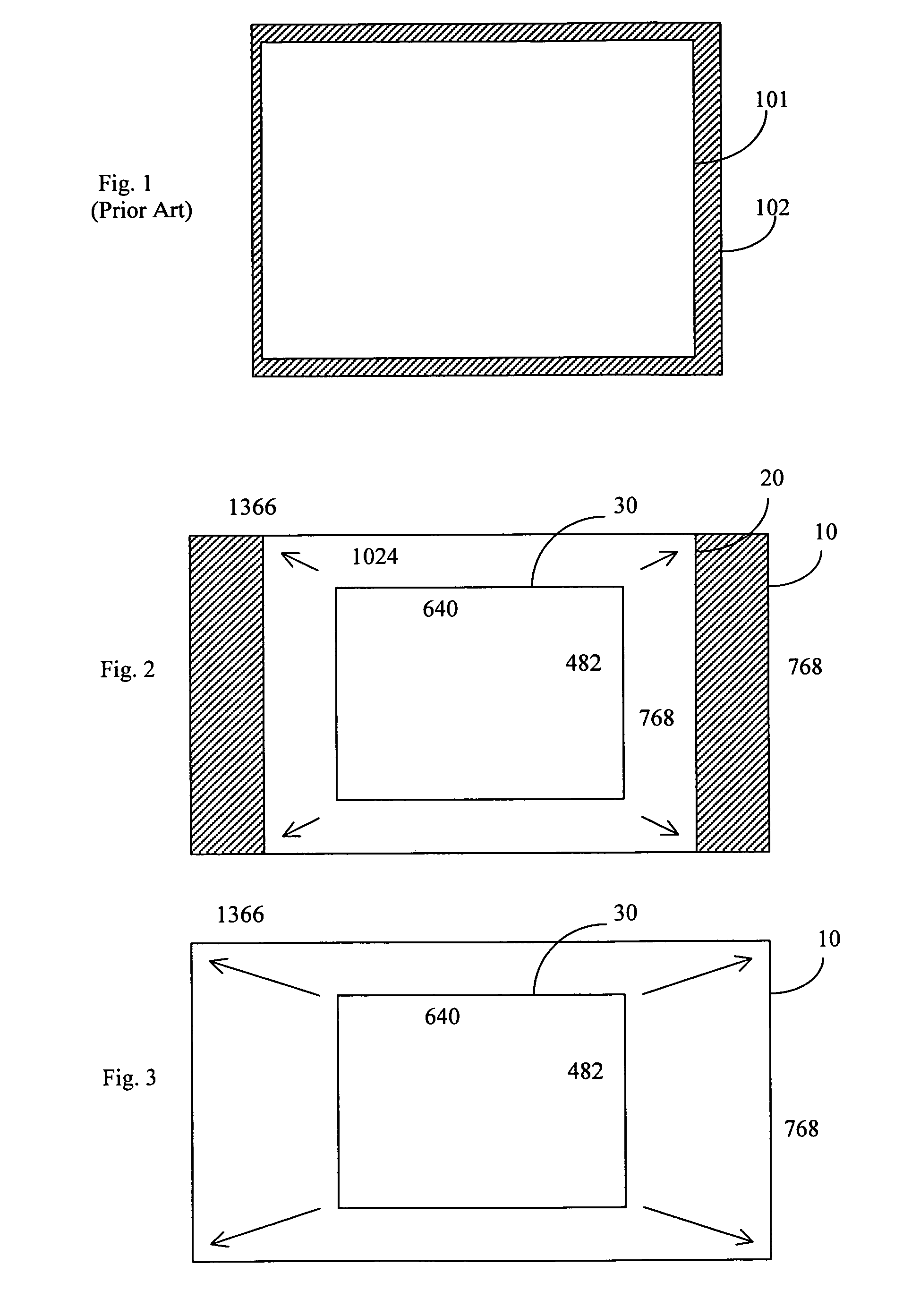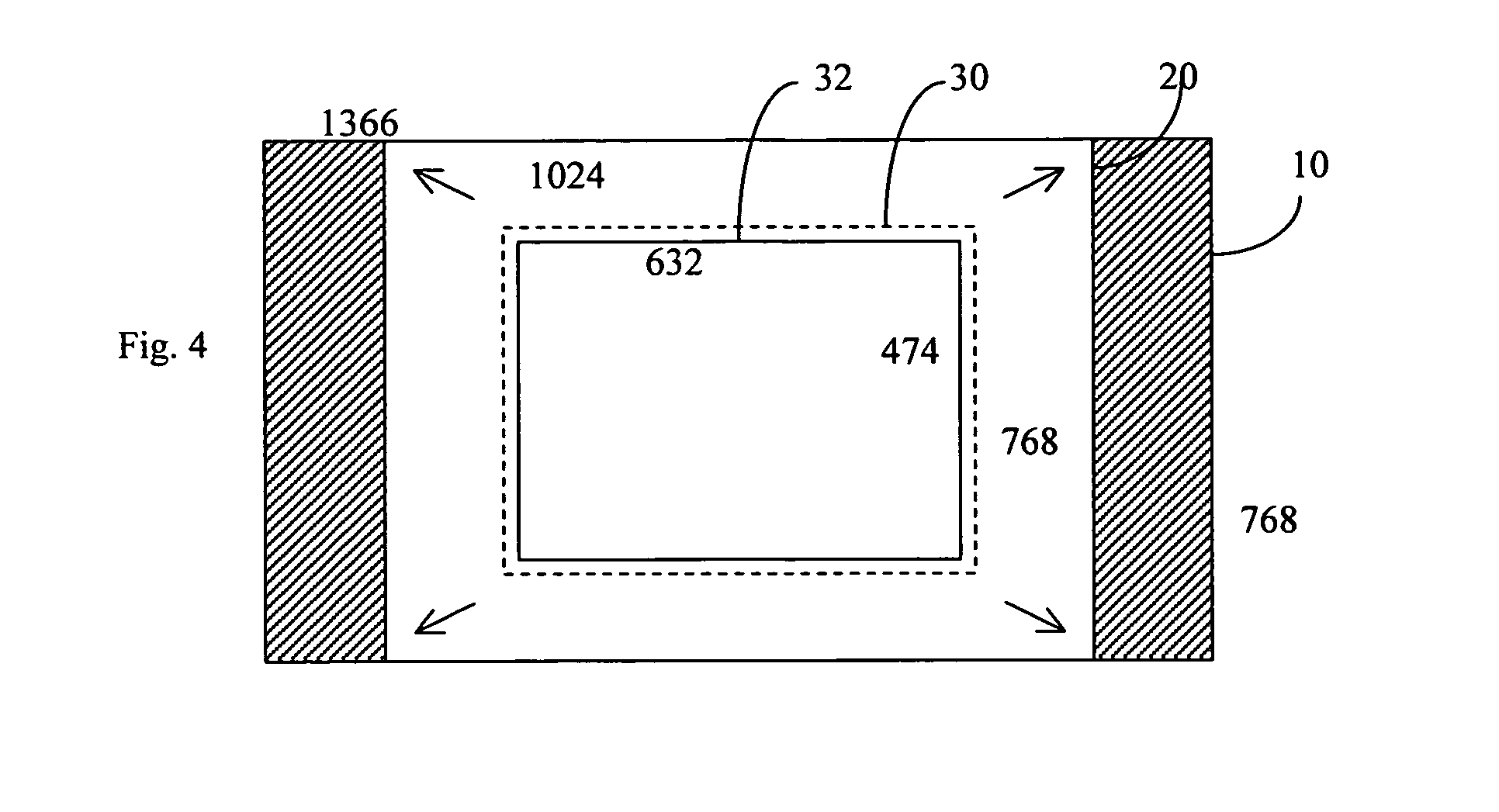Method for scaling and cropping images for television display
a technology for television display and image, applied in the field of image processing for television display, can solve the problems of preventing the viewer from seeing the whole image, distorting the image, distorting the image, and more damage to the image, so as to reduce the overexpansion percentage, distort the image, and increase the damage to the image
- Summary
- Abstract
- Description
- Claims
- Application Information
AI Technical Summary
Benefits of technology
Problems solved by technology
Method used
Image
Examples
Embodiment Construction
[0012] According to embodiments of the present invention, the television device does not over-expand the television image from the television broadcast or another source such as a DVD player (hereinafter referred to as the source television image or the source image). Instead, it either scales the source image using its full resolution, or crops the source image and then scales it. The descriptions below give a number of examples of the scaling and cropping method for a display panel having a native screen resolution of 1366×768 pixels.
[0013] In a first scaling example, schematically illustrated in FIG. 2, the source image is an image defined by the NTSC standard and has a native image resolution of 640×482 pixels (area 30). The source image is scaled (expanded) to a size of 1024×768 pixels (area 20), which preserves the aspect ratio of the source image. In other words, the scaling ratio (the ratio of the resolution of the scaled image to the resolution of the source image) has the...
PUM
 Login to View More
Login to View More Abstract
Description
Claims
Application Information
 Login to View More
Login to View More - R&D
- Intellectual Property
- Life Sciences
- Materials
- Tech Scout
- Unparalleled Data Quality
- Higher Quality Content
- 60% Fewer Hallucinations
Browse by: Latest US Patents, China's latest patents, Technical Efficacy Thesaurus, Application Domain, Technology Topic, Popular Technical Reports.
© 2025 PatSnap. All rights reserved.Legal|Privacy policy|Modern Slavery Act Transparency Statement|Sitemap|About US| Contact US: help@patsnap.com



